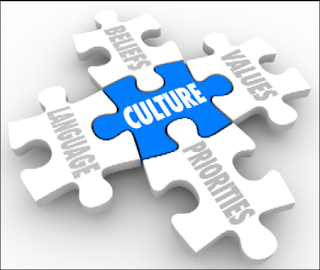The culture is most commonly described as
the way things are done in an organization. The organization culture is formed
through several components, which are behaviours, norms, values, philosophy,
rules of the games and feelings (Hellriegel et al.,1998 cited in Martins
& Terblanche,2003).
A strong culture provides shared values
that ensure that everyone in the organization is on the same track. Values are
invisible guidelines. They are the core elements of culture. The values shared
among the members of the group often determine the common actions and
structures.
According to Coleman
(2013) there are six components of a great corporate culture which are
vision, values, practices, people, narrative and place. He further states the
integrated culture is built by employees with the desire and ability to share
company values and embrace those values. World’s greatest firms recruit
employees who are talented and best suited for their corporate culture.
Benefits of strong organizational culture
The newly recruited employees identify the
values of the organizations through the culture and they will be able to
maintain the direction towards the organizational goals. A strong culture
attracts and retains talented employees. Employee turnover will be less when
they feel that they belong to that particular organization. Further corporate
culture adds to the brand identity, which could create a major impact on sales
and customer loyalty.
Global example on organizational culture
Edward Jones is a financial services firm
in USA, which is in the Fortune’s “100 Best Companies to Work for” list. It has
placed high value on making sure their customers and employees both are happy.
Every employee has the opportunity to become a partner. Over 7900 office
administrators have been promoted to partner. During the recession of 2008,
though the firm worked towards cost cutting it managed to keep all of their
employees. Further they are drastically opposite from the finance industry,
where 63 percent of their employees are female (Daisyme, 2015).
References
Martins, E. C. & Terblanche,, F.,
2003. Building organisational culture that stimulates creativity and
innovation. European Journal of Innovation Management, 6(1),
pp. 64-74.
Coleman, J., 2013. Havard Business
Review. [Online]
Available at: https://hbr.org/2013/05/six-components-of-culture
[Accessed 4 July 2018].
Available at: https://hbr.org/2013/05/six-components-of-culture
[Accessed 4 July 2018].
Daisyme, P., 2015. Enterpreneur. [Online]
Available at: https://www.enterpreneur.com/article/249293
[Accessed 5 July 2018].
Available at: https://www.enterpreneur.com/article/249293
[Accessed 5 July 2018].









